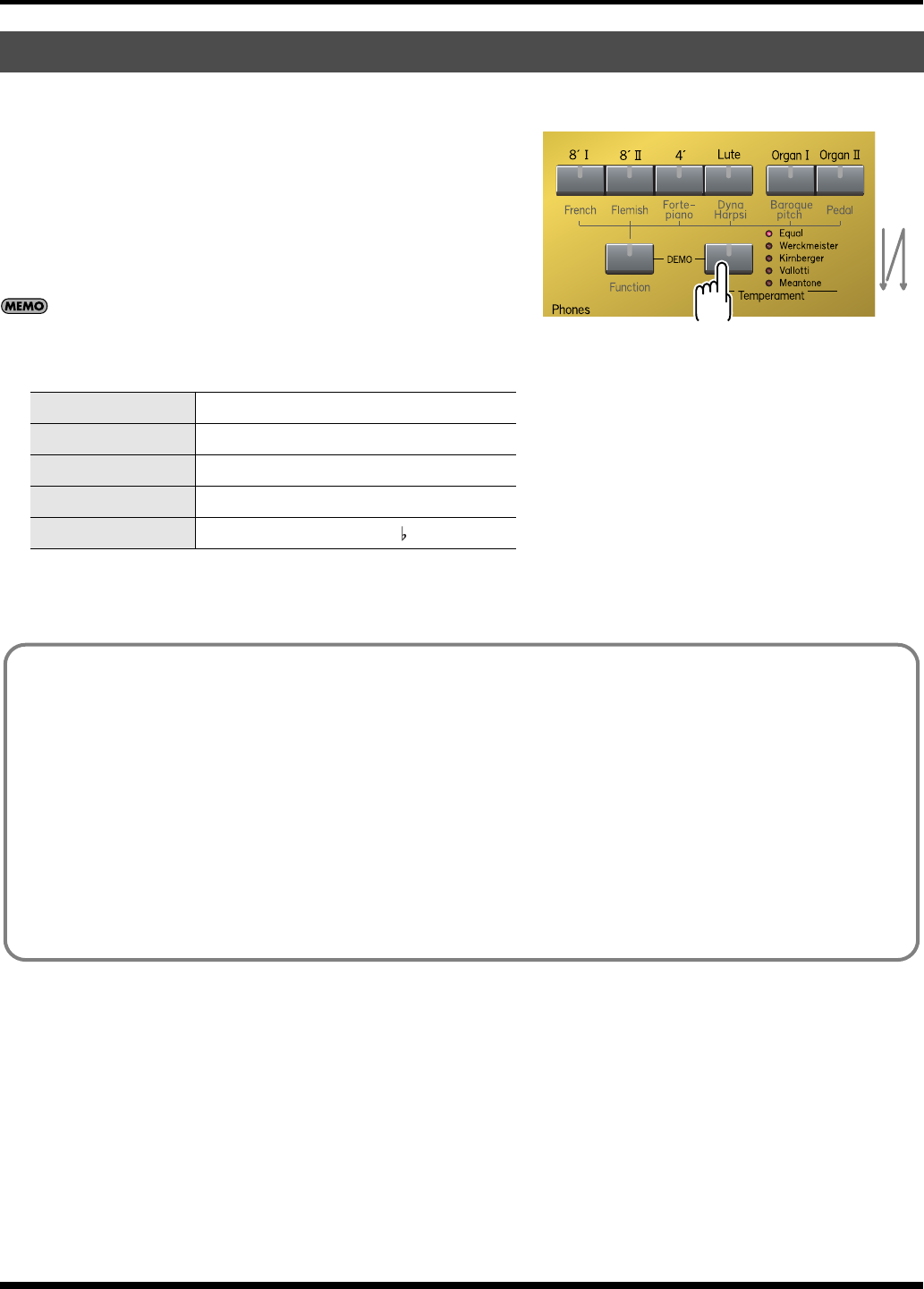
17
Playing <Basic Operation>
The C-30 allows you to easily change the temperament.
◆
Press the [Temperament] button until the indicator of the desired
temperament is lit.
While you are pressing the [Temperament] button, the following
temperament indicators will light; when you take your finger off
the button, that temperament will be selected.
If you proceed past Meantone, you will “wrap around” to Equal.
Equal will be selected every time the power is turned on.
Selecting a temperament
Equal
Equal temperament
Werckmeister
Werckmeister temperament, type 1–3
Kirnberger
Kirnberger temperament, type 3
Vallotti
Vallotti
Meantone
Meantone temperament (E )
Using historical temperaments
By using historical temperaments to play music that is appropriate for the characteristics of each temperament, you can
more strongly bring out the beauty or tension inherent in a composition. In particular, when playing a composition that
uses a transposable temperament and includes transpositions, the sonority of the chords will change when a
transposition occurs, creating subtle changes in the coloration of the song.
Werckmeister is a temperament that combines Meantone and Pythagorean scales to enhance the degree of
transposability, and has been used ever since Bach up to the present. Kirnberger was conceived using similar methods,
and is used mainly when playing the organ works of Bach.
Vallotti is the most recent of the temperaments described here. It is close to equal temperament, but since it is somewhat
pure, it blends easily with other instruments, and today is often used in ensembles.
Meantone was popular throughout Europe during the Baroque era, and was used customarily by Baroque musicians
such as Handel as well as in compositions of the Renaissance period.
C-30_e.book 17 ページ 2008年3月10日 月曜日 午前10時31分


















